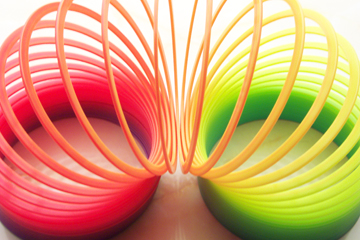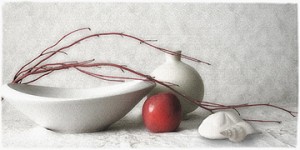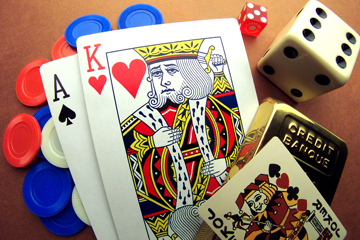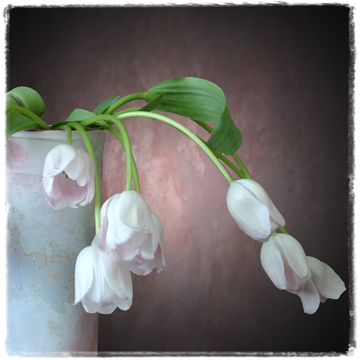Shoot Masterpieces On Your Kitchen Table
by Arthur H. Bleich–
When the weather outside turns frightful why not stay inside, where it’s nice and warm, and shoot some still lifes. What’s a still life? It’s simply a creative arrangement of objects which you design. You’ve probably seen classical still life paintings such as flower arrangements or bowls of fruit with fish or fowl in the scene. While these are more traditional still life subjects, yours should be limited only by your imagination.

© Al Francekevich
Do you have a favorite hobby or collection that would lend itself to being portrayed in a still life? You can get a great deal of creative satisfaction arranging related objects and then shooting the results. And you can work in an unhurried manner, moving things around and trying different lighting until you’re satisfied with the effects. You’re the director and anything goes.
Good still lifes have two things in common: arrangement of objects so they are compositionally interesting and dramatic lighting. Rarely will you see a still life front-lit because it flattens the objects and takes away their depth. So shoot your still life with side light, or at 45 degree angle to the subject.

© Judy Mandolf
Backgrounds are also an important element. If you want a deep, rich effect, use a dark background or light your objects so the background isn’t illuminated. Does that mean light–colored backgrounds are out? Not at all. Maybe you want to do a high-key still life where the colors become desaturated or pale to make the picture delicate and dreamy. In that case, a white or pastel background might be just the ticket.
When you set up a still life, spend some time with it. Shoot from different angles, shift things around, have the light fall from different directions. Vary your camera angle, too. Don’t just shoot at eye level. Some photographers have done hundreds of shots of the same still life objects over a period of weeks, changing this or that and constantly tweaking the scene to perfection.

© Al Francekevich
Keep your still lifes simple. The more elements you have to deal with, the more difficult they are to shoot. A single flower in a vase, or an arrangement of colorful fruit or vegetables is a good start. When working with several objects, start by positioning the dominant object and then add others one at a time to see how they go together. If the scene looks too cluttered, cut back. To begin with, work with an odd number of objects; they’re easier to arrange and are usually more compositionally pleasing.
The best thing about shooting still lifes is that you don’t need an elaborate studio set-up– a small kitchen table (or even a card table) will do just fine. Begin with a single light source, such as an inexpensive indoor floodlight and a plain background. Or better yet, use natural window light. An Eastern exposure will supply shafts of sunlight in the morning and then more even lighting during the rest of the day.

© Judy Mandolf
For a background, a wall or some cloth material or even some textured wallboard veneer will do just fine. If you’re shooting up close and have an aperture priority mode on your camera, set it to a small lens opening (f/8 through f/22). This will increase your depth of field (range of sharpness) from front to rear objects. To offset the slow shutter speeds that will be required, use a tripod so your camera stays rock steady. And trip the shutter with either a remote release (if your camera has one) or the self–timer— both of which will eliminate camera–shake.

© Al Francekevich
You can easily add some beautiful visual effects to your still lifes after they’ve been photographed. Red River Pro Judy Mandolf uses Nik Color Efex and Topaz plug-ins to give her fruit and flower still lifes an ethereal look– try the Monday Morning filter. She also uses Photoshop’s Add Noise and Classical Blur to make some of her images look like paintings. On the other hand, you may want to stay with hard-edged realism as does Red River Pro Al Francekevich on many of his still lifes that depict people’s hobbies and interests.
Still lifes can be very challenging and your patience may sometimes be put to the test as you strive to get things just right, but there’s no better photographic exercise to teach you composition and lighting. Even Ansel Adams shot still lifes before he became known for his magnificent landscapes and one of them, a simple white rose lit by window light, is a classic.

Ansel Adams – Rose and Driftwood c.1932
So set up your own little corner of the world and get to work. Because still lifes are universal in their appeal, you can use them on greeting cards, sell them to crafts shops or galleries, offer them at fairs and flea markets or just frame your best ones and display them prominently in your home as beautiful artwork.
Original Publication Date: February 17, 2015
Article Last updated: February 17, 2015
Related Posts and Information
Categories
About Photographers
Announcements
Back to Basics
Books and Videos
Cards and Calendars
Commentary
Contests
Displaying Images
Editing for Print
Events
Favorite Photo Locations
Featured Software
Free Stuff
Handy Hardware
How-To-Do-It
Imaging
Inks and Papers
Marketing Images
Monitors
Odds and Ends
Photo Gear and Services
Photo History
Photography
Printer Reviews
Printing
Printing Project Ideas
Red River Paper
Red River Paper Pro
RRP Products
Scanners and Scanning
Success on Paper
Techniques
Techniques
Tips and Tricks
Webinars
Words from the Web
Workshops and Exhibits
all
Archives
January, 2025
December, 2024
November, 2024
October, 2024
September, 2024
August, 2024
July, 2024
June, 2024
May, 2024
more archive dates
archive article list




